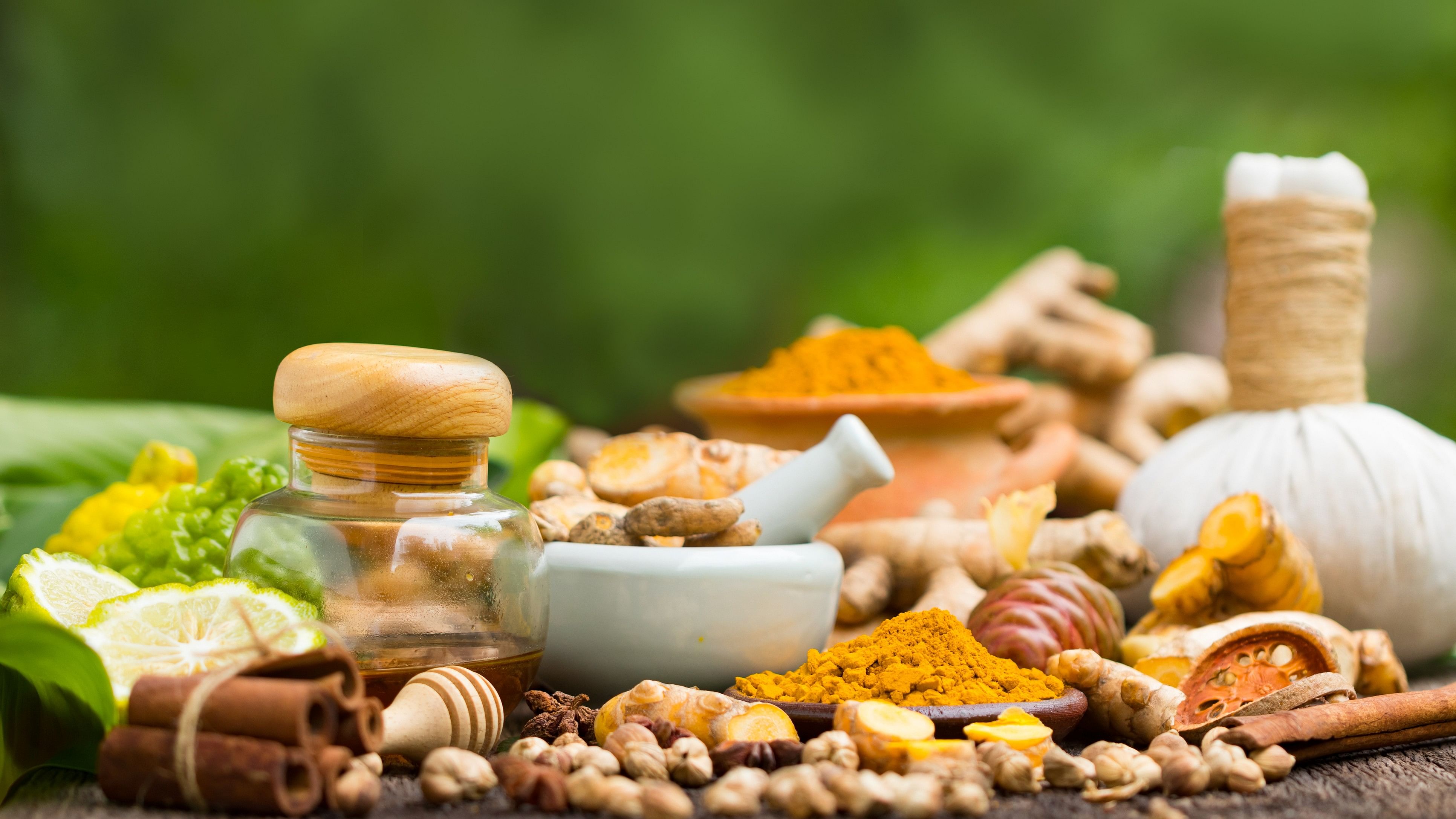
Representative image for ayurveda.
Credit: iStock Photo
Hubballi: Year-on-year, the Ayush industry in India is growing at an average rate of 18%. But the industry’s dependency on protected forests for most raw materials continues, suggesting that the cultivation of medicinal plants has not caught on.
Documents accessed by DH show that in 2023-24, the industry is utilising 8-9 lakh metric tonnes of raw materials worth Rs 19,600 crore. This is a significant increase from 2014-15 when it utilised 5 lakh metric tonnes of raw materials worth Rs 7,000 crore.
Experts say that despite its potential, the sector is not flourishing as expected because large-scale cultivation of medicinal plants is yet to take off. Nearly 75% of the raw materials used in the Ayush industry are sourced from forest areas, compared to 85% a decade ago.
The 10 herbal raw extraction companies in Karnataka require nearly 14,250 metric tonnes of raw materials to produce 339 metric tonnes of “fine raw materials” that are used by 222 registered firms to manufacture products. The materials include roots and rhizomes, whole plants, leaves, heartwood, fruits and stem bark.
The market has not been able to establish a reliable source of farmers as they can only provide a few varieties of plants in select seasons. On the other hand, traders can supply up to 20-30 varieties as they usually buy from collectors who gather these resources from forests. Hence, many firms rely on traders and are hesitant to partner with farmers, notes Prabhu M J, senior medicinal plant consultant at the Karnataka State Medicinal Plants Authority (KaMPA).
Roopa D, a botany consultant at KaMPA, says the lack of organised farming of medicinal plants has resulted in the overexploitation of forest resources. Saraca asoca, an endangered plant, is found in the Western Ghats. Annually, more than 2,400 MT Saraca asoca is traded in the country. However, the network remains largely under wraps.
Prabhu explains that cultivating medicinal and herbal plants can yield significant profits for farmers. "Yet, most of them are not interested as cultivating such plants is often a tedious job and there is uncertainty in returns," he says.
After retiring from the Agriculture Department, Basavanni B Nilajigi has spent the past decade growing medicinal plants in Khanapur taluk of Belagavi district. Nilajigi partnered with an Ayurveda medicinal company from Kerala and has been supplying medicinal plants.
He earns an average of Rs 35,000 to 45,000 annually from cultivating an acre of land. “There should be more scope and better prices for the cultivation of medicinal plants,” says Nilajigi, who grows around 15 species on his land.
The government has developed educational programmes to highlight the sector's potential. It has also created a marketing platform where producers, manufacturers and buyers can trade through a single platform. A few companies have begun making agreements with farmers to cultivate specific plants.
The industries manufacture medicines, cosmetics and nutrition-based food products using plant derivatives as raw materials. FSSAI-licensed companies, wellness industries and other firms also use medicinal plants.
Traditional medicine practitioners and food companies also use medicinal plants. Many alternative medical practitioners use Ayush products to treat lifestyle ailments as well.